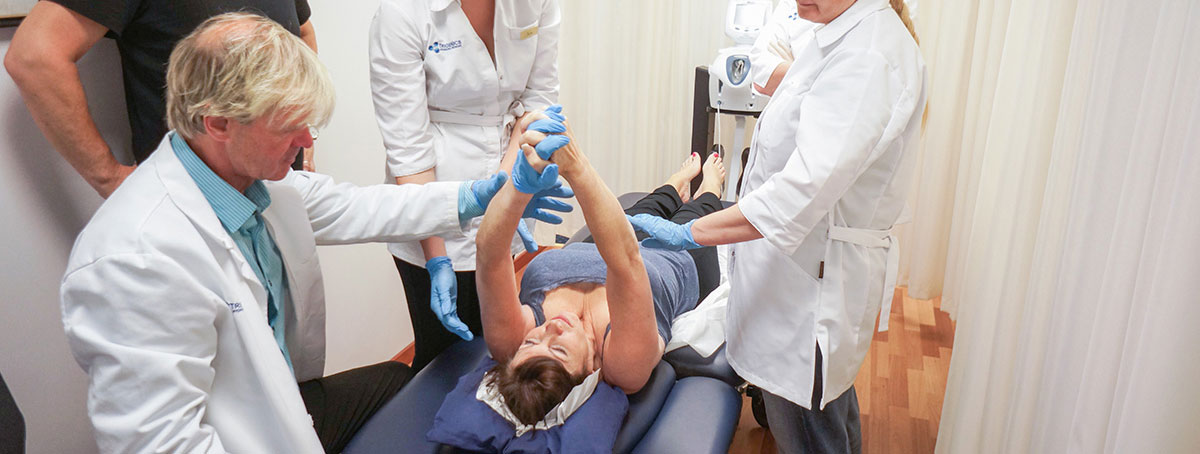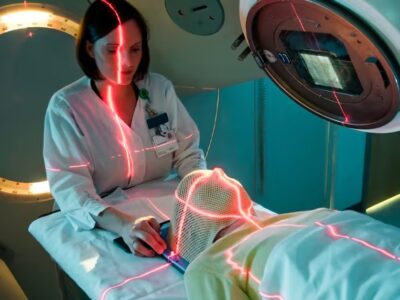
The Oolo-Austin Trigenics or OAT procedure provides a straightforward method of treating frozen shoulder, medically referred to as adhesive capsulitis. The condition of the frozen shoulder limits the range of motion (ROM) due to a build-up of scar tissue and adhesions that cause the shoulder capsule to contract and freeze in place.
The manual capsular dissection (MCD) procedure developed by Dr. Allan Gary Oolo-Austin is another name for OAT. It requires no surgery. The non-invasive procedure bears some resemblance to manipulation under anesthesia (MUA) although it restores function much quicker. Initially developed in 2012, the procedure’s efficacy was documented in a pilot study by Dr. Oolo-Austin and Dr. Maxim Bakhtadze, MD, Ph.D. published in the Samara Medical Journal.
The typical initial visit for the outpatient procedure requires about one hour. The patient receives a local atheistic, but no general anesthesia. This allows the patient to remain cognizant during the procedure and able to contribute feedback on pain, motion, and related feeling in other areas of the body. Currently performed only at World Frozen Shoulder Clinics, a facility representative states the procedure has a 98 percent clinical success rate.
A chiropractor and physician specializing in sports medicine, Dr. Oolo-Austin developed the method of isolating, then separating the adhesive tissue within and without the shoulder capsule. This manual manipulation treatment in a medical facility results in the restoration of movement, but the at-home physical therapy performed by the patient continues their recovery. It includes specific patient movements and mobilization procedures to retrain the shoulder muscles and rebuild their function as well as continue to extend the ROM.
The manipulation process used in the treatment often results in the patient being able to raise their arm above their head before leaving the clinic after the procedure. While not an instant fix since it does require PT after the procedure, its overall treatment results in a near-full range of motion within weeks as opposed to the nine-month post-operative recovery for surgery. It also requires no cortisone shots, hydrodilation, ART, or NAT treatments. As with most medical procedures, patients should schedule at least one follow-up visit to allow the doctor to examine their recovery and progress in neuromuscular re-training.
The exclusivity of the performance of the procedure has put off some individuals who could benefit from it, but attending the clinic can help the frozen shoulder. OAT/MCD can provide quick relief that restores movement.











